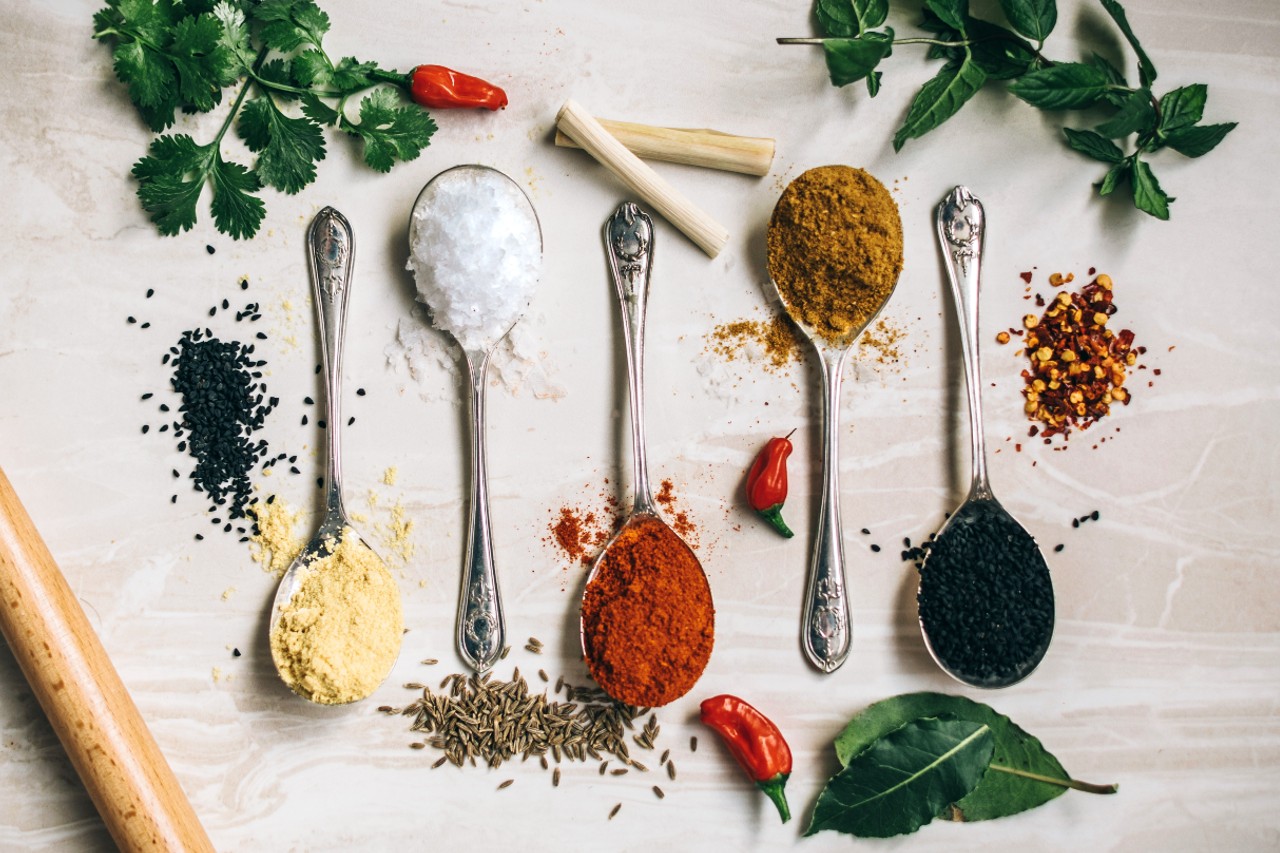Sumac:
Spice up your Spices rack with sumac, which has a lemony tang that can add an unexpected note of flavor to everything from stuffed grape leaves to eggplant. You’ve probably never heard of sumac, but it’s one of the most versatile spices in your kitchen. Not only does it taste great, but it can be used as both a spice and a garnish! Here are some ways you can use sumac:
- Add a lemony tang to dishes like stuffed grape leaves, eggplant salad, and hummus.
- Use as a garnish on fish with yogurt sauce, chicken kebabs, or quinoa pilafs.
- Add tartness to spiced lentil soup or pita bread spread with labneh (strained yogurt).
Grains of Paradise:
It’s a lesser-known relative of ginger and cardamom, but it gives a robust, spicy kick just like the two more popular spices. Grains of Paradise is a spice that adds a spicy kick to foods.
Grainy in texture and appearance (think poppy seeds), Grains of Paradise look like tiny black crystals when ground into powder form. Their lemony flavor works well anywhere you’d use ginger or cardamom: in cooking, baking, as an ingredient in rubs for meat and fish; as a garnish for soups or stews; or even just sprinkled over desserts!
Saffron:
You don’t need much of this gorgeous spice in your dish because its color and flavor are so intense that just a pinch goes a long way. Saffron is made from the dried stigmas of the saffron crocus, which has been cultivated since at least 3200 B.C. The plant grows best in areas where the soil is dry and sandy, but it can be grown elsewhere using irrigation systems. Saffron threads have an earthy, bitter taste that makes them perfect for adding depth to dishes such as risotto or paella.
Saffron has an unmistakable color that ranges from bright yellow to orange-red with flecks of gold mixed in—its beauty makes it stand out even when added to food (though you should probably avoid adding too much). Because it’s so expensive, saffron was traditionally only used by royalty in many European countries—and even today some people still believe this ingredient is reserved only for special occasions like weddings or birthdays!
Annatto Seeds:
This colorful, nutty seed is great for cooking meats, especially fish. If you use it as part of a dry rub or marinade, you’ll find that it adds both warmth and freshness to the dish. Annatto seeds are used in cooking. They can be added to dry rubs, marinades, and fish dishes, but also vegetable dishes and soups.
Nigella Seed:
It’s not just for ornamental purposes; these tiny black seeds are incredibly versatile both in the kitchen and on your plate since they go well with both savory and sweet foods.
Nigella seeds are used in a variety of dishes, including Italian pasta and Greek salads. They’re also commonly used in Indian cooking—you might recognize their vibrant black color in dishes like chana masala or biryani. The tiny, round seeds have a nutty flavor that can be slightly bitter on its own but blends well with sweeter spices like cinnamon and cardamom.
Nigella seeds are often added to various spice mixes such as garam masala or Shammi ka atta (or besan ka atta), which is an Indian dry flour made from ground chickpeas mixed with turmeric and other spices. The mixture is then used for baking flatbreads called rotis or parathas (depending on how it’s cooked).
Asafoetida Powder:
It may have an unfortunate name, but this powder that comes from the dried resin of giant fennel plants smells wonderful and tastes even better when it’s cooked with vegetables like spinach or cabbage.
Asafoetida is a spice that comes from the resin of giant fennel plants. You’ve probably seen it in Indian cooking, but asafoetida has also become popular with chefs outside of India because they appreciate its strong and unpleasant smell and taste. Asafoetida is used to add flavor to dishes like chana masala (chickpeas) and aloo gobi (cauliflower). It has an oddly metallic aroma that some people describe as smelling like old socks, but others find pleasant. This can be surprising to those who don’t know how useful this spice can be!
























